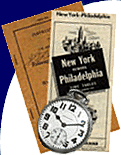

| home | articles | briefs | classifieds | flimsies | interchange |
 |
 |
||||||
|
|||||||
 |
RyPN Briefs November 21, 2006 previous brief ~ return to briefs index ~ next brief World War I Loco Which Worked in India for 50 Years now being Restored in UK The 'Lion' is set to roar again. A narrow gauge steam locomotive used during the first World War I veteran and extensively used in India for more than 50 years, is now ready to steamed again in UK - this time for heritage rides for enthusiasts. It has been restored at a cost of more than 50,000 pounds. "This is one of the last living links of the momentous First World War and we are trying to get it restored to its working order and save it for a very long, long time. We took trial runs on August 1 and it is doing fine," Mervyn Leah, Chairman of the Leighton Buzzard Railway, and a trustee of the affiliated Greensands Railway Museum Trust (GRMT), Bedfordshire told Hindustan Times.
The engine, classified as "War Department Light Railway No. 778", was built in 1917 by the Baldwin Locomotive Works, Philadelphia, USA (original number 44656). It was one of the 495 tank-engines built by Baldwin, for use on the vast network of 2ft (610mm) gauge lines laid to supply the World War 1 battlefields, in northern France, with food, ordnance and manpower. After the war, it was one of 50 engines exported to India. While in India, it was used by the North Western Railway of India, becoming No 16 in their fleet. It was sold to a dealer in 1933, and later worked on the Daraula Light Railway. Fifty years later, it was withdrawn from service at its final home in India, the Upper India Sugar Mills, Khatauli, Uttar Pradesh, where it was christened as 'Tiger', and sent to England for preservation. Initially at the Chalk Pits Museum, Amberley, Sussex, it is now based at the Leighton Buzzard Railway, Bedfordshire, where the restoration project is taking place. "The loco is almost back in working order, and could be hauling trains in 2007," Leah said. In fact, the loco was brought to Leah's Leighton Buzzard Railway (LBR) in 1994 and is an active affiliate in the restoration project. The LBR already runs two restored Indian locos, including one from the Matheran line. Asked what was the kind of money involved in restoration, sources said the funds include the Heritage Lottery Fund award of £50,000, generous financial support from enthusiasts that got the project off the ground, and the assistance provided, in both money and kind. "We require more funds and those willing to help will be offered an invitation to the official launch, a free ticket for the first train it hauls, and a subsequent footplate ride," he adds. There are other two Indian locos with the society: Loco number: 740 Run on Matheran Light Railway, Maharashtra No 740 is the biggest locomotive ever to have run on the Leighton Buzzard Railway, weighing in at 18 tonnes. It was built for the Matheran Light Railway, which serves the hill station of Matheran, in Maharashtra, India. To combine the power needed to climb the steep gradients, with the ability to get round sharp curves, No 740 was built with radial axles, which allow the driving wheels to "steer" round corners--a feature which is also very valuable here. On loan from Railworld, Peterborough, it was restored to working order at Leighton Buzzard, with financial support from the Science Museum. Next scheduled to be in operation on 20th, 27th & 28th August 2006. Loco name: Rishra Run on Calcutta Corporation line This tiny machine is the only known survivor of the small number of steam engines built by Baguley, who were much better known for their diesel locomotives and railcars. Supplied to Calcutta Corporation, India, it shunted coal wagons at a water pumping station. Currently visiting the Welsh Highland Railway (Porthmadog). |
|||
Copyright © 1998 thru 2025, all rights reserved, contents may not be used without permission. |